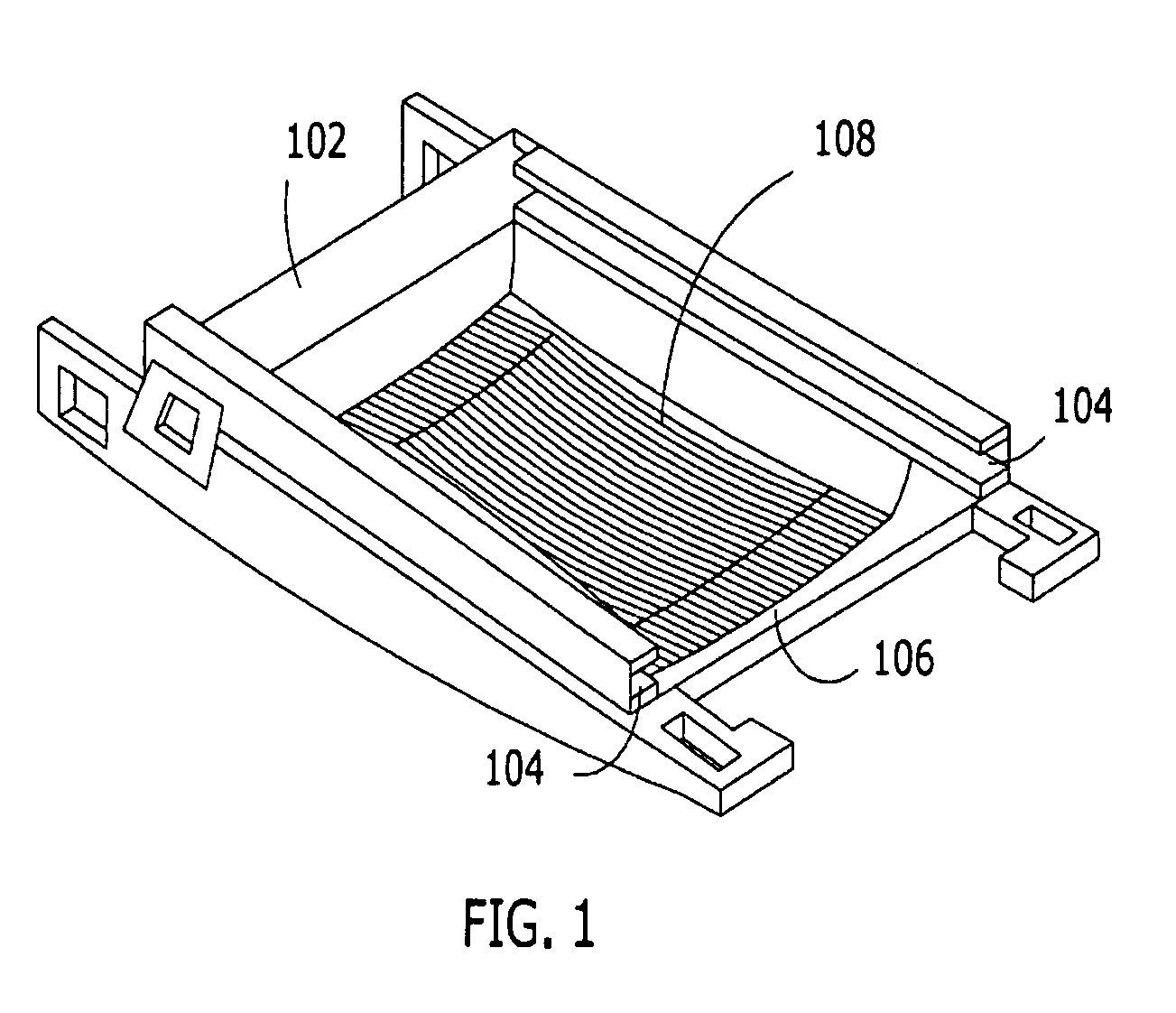Thermal lamination module
a technology of thermal lamination and module, which is applied in the field of thermal management devices, can solve the problems of increasing the “cost” of heat dissipation, increasing the risk of failure or malfunction of electronic components at higher temperatures, and reducing the efficiency of thermal management, so as to improve thermal management and reduce friction. the effect of heat dissipation
- Summary
- Abstract
- Description
- Claims
- Application Information
AI Technical Summary
Benefits of technology
Problems solved by technology
Method used
Image
Examples
second embodiment
[0048] In a second embodiment as depicted in FIG. 5, a thermal laminate 500 includes a top tedlar film layer 502, a middle gap filler layer 504, and a bottom copper foil layer 506. The top film layer 502 provides an interface to the thermal laminate 500. The middle gap filler layer 504 is disposed underneath the top film layer 502. The middle gap filler layer 504 provides a thermal pathway for the heat radiation. The bottom copper foil layer 506 is disposed underneath the middle gap filler layer 504. The bottom copper foil layer 506 provides a grip to the top film layer 502 and a middle gap filler layer 504. The copper foil is ideal for printed wiring board modification and repair. The copper foil is also designed for use as electro-magnetic interference (EMI) and radio-frequency interference (RFI) shielding on the electronic devices or other small electromagnetic components, such as transformer and reactor coils, instruments and control motors. The copper foil has outstanding adhes...
third embodiment
[0049] In a third embodiment, a thermal laminate 600 includes a top tedlar film layer 602 and a gap filler layer 604 as shown in FIG. 6. The top film layer 602 provides enveloping edges beyond the gap filler layer 604. The top film layer 602 provides an interface to the thermal laminate 600. The gap filler layer 604 is disposed underneath the top film layer 602. The gap filler layer 604 provides a thermal pathway to heat radiation emitted from the PCMCIA card. The gap filler layer 604 also provides a grip to the top film layer 602.
fourth embodiment
[0050] In a fourth embodiment, a thermal laminate 700 includes a top tedlar film layer 702, a middle gap filler layer 704 and a thermal adhesive bottom layer 706. The middle gap filler layer 704 and the thermal adhesive bottom layer 706 can be configured for different sizes as shown in FIG. 7. The top tedlar film layer 702 is wrapped around to provide enveloping edges over middle gap filler layer 704 and the bottom layer 706. The top film layer 702 provides an interface for the thermal laminate 700. The middle gap filler layer 704 is disposed underneath the top film layer 702. The middle gap filler layer 704 provides a thermal pathway for heat radiation. The bottom layer 706 is disposed underneath the middle gap filler layer 704 to provide a grip for the top film layer 702 and a middle gap filler layer 704.
[0051]FIG. 4 represents the assembly 102 installed on an electronic device having the present thermal laminate, the heat sink 108 and a PCMCIA card 402 positioned thereon, in acco...
PUM
| Property | Measurement | Unit |
|---|---|---|
| thickness | aaaaa | aaaaa |
| thickness | aaaaa | aaaaa |
| operating temperatures | aaaaa | aaaaa |
Abstract
Description
Claims
Application Information
 Login to View More
Login to View More - R&D
- Intellectual Property
- Life Sciences
- Materials
- Tech Scout
- Unparalleled Data Quality
- Higher Quality Content
- 60% Fewer Hallucinations
Browse by: Latest US Patents, China's latest patents, Technical Efficacy Thesaurus, Application Domain, Technology Topic, Popular Technical Reports.
© 2025 PatSnap. All rights reserved.Legal|Privacy policy|Modern Slavery Act Transparency Statement|Sitemap|About US| Contact US: help@patsnap.com



